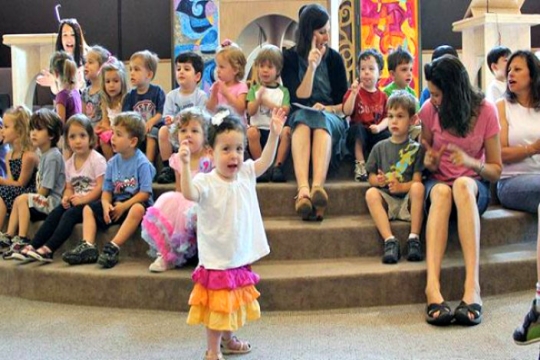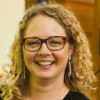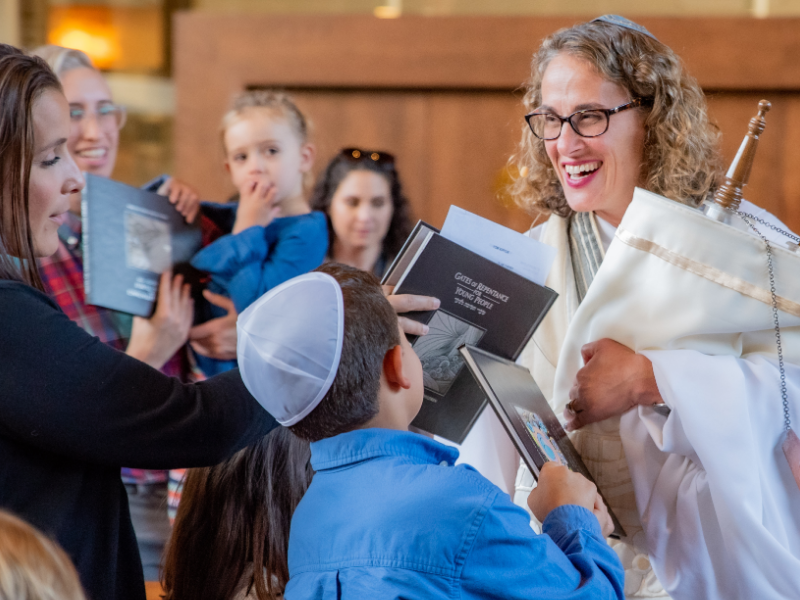
If your congregation spent 12-24 months focusing on one topic of your congregational life, could it transform your entire community? If you decided to really delve into engaging baby boomers or figuring out how to focus on social justice issues, could it be a game-changer for your congregation? I’ve seen congregations from across North America do just that, and the result is relevant, thriving communities:
- Temple Emanu-El in Dallas, TX, the largest Reform congregation in the Southwest, set a goal of creating meaningful relationships among its many members. The congregation brought members together through small, lay-led groups, which transformed the way people relate to each other within their community and made people feel known by the congregation. As a result, Temple Emanu-El managed to attract a wider demographic, and engagement in community life has increased tremendously, both inside and outside the synagogue walls.
- Temple Emanu-El in Utica, NY, decided to focus its efforts on engagement of young families. This small congregation started running family Havdalah events, a short, musical family service, and dinner once a month. They also engaged parents of young children in leadership positions, installed a changing table in the bathroom, and partnered with the local JCC on PJ Library®. All these steps proved to have a huge impact: Participation rates in congregational activities more than doubled in two years, and affiliation rates are continuously increasing among this cohort.
- Congregation Shir Hadash in Los Gatos, CA, examined the way they raise money from their members. They realized that different people had different needs, and could be offered different choices. Instead of making multiple appeals, they developed a “Give Once” campaign for their top donors, which provided an opportunity to make a single annual commitment to the congregation. Total commitments from this group increased by 20% over the previous year.
These are just a few stories – snapshots, if you will – of the kinds of success that our congregations have seen when they focus on a single topic that was meaningful and transformative to their community. Each of these successes developed out of their congregations’ participation in URJ Communities of Practice.
When I left my pulpit job to become the director of Communities of Practice at the URJ, I was often asked, “What is a community of practice?” The truth was, I wasn’t entirely sure. What I came to learn is that URJ Communities of Practice provide a vital space and opportunity for congregations to experiment and innovate in important areas of synagogue life.
Each congregation creates a team that spends 12-24 months diving deep into a specific topic – really learning about it, figuring out the specific needs of their community in regards to that topic, and designing a pilot to innovate in the field. In addition, congregations learn about theories of change and what a change process entails.
Because this process is done alongside other congregations that share the passion and commitment to the same topic, congregations support each other through challenges and celebrate with one another when they encounter successes and rewards. The results of this work not only inform these specific congregations but contribute to the cumulative communal knowledge in each specific field. Ultimately, Communities of Practice allows us to do something together, as a movement, that we couldn’t do on our own.
We asked the Reform community which topics you wanted to delve into, and we listened. This year, we’re excited to launch four new Communities of Practice, and applications are open through May 9th, 2016. The topics include: Engaging Baby Boomers, Reimagining Congregational Education (in partnership with the Association of Reform Jewish Educators), Creating a Culture of Constructive Conflict (in partnership with Pardes Rodef Shalom Communities), and Moving Justice to the Center of Your Congregation (in partnership with the Religious Action Center and Just Congregations).
We know that not every congregation can spent the time and personnel on such a lengthy process at the moment, so we want to make ensure that opportunities are also available for congregations who wanted to focus on one topic in a less intensive format. Learning opportunities will soon become available on a variety of topics, including governance and mental health and inclusion. Sign up for an upcoming mental health and inclusion online learning series, be informed about our offerings on the topic of governance, and get updates on other learning opportunities that will arise through our bi-monthly Inside Leadership newsletter.
We hope your congregation will embark on this journey with us and see how focusing on one topic can transform your entire community.
Have something to say about this post? Join the conversation in The Tent, the social network for congregational leaders of the Reform Movement. You can also tweet us or tell us how you feel on Facebook.
Related Posts


